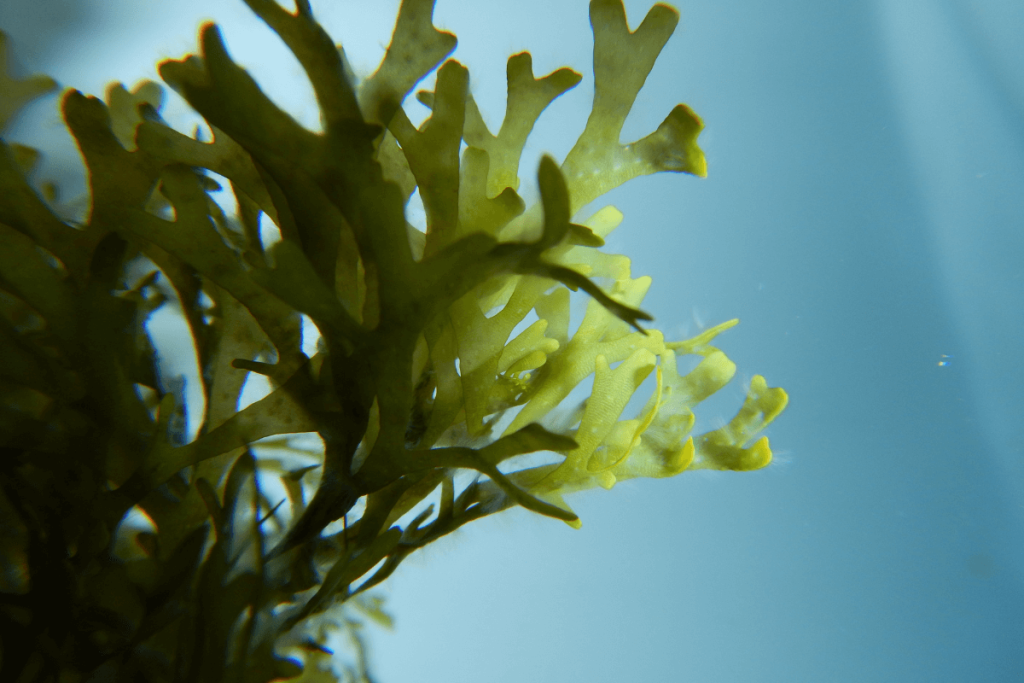
The study title Development and Optimization of Decellularized Seaweed Scaffolds for Tissue Engineering highlights how Devaleraea mollis (Pacific dulse), a red marine seaweed, can serve as a sustainable plant-based scaffold for tissue engineering applications. Pacific dulse contains high amounts of cellulose and bioactive substances and has a fibrous structure that resembles the natural extracellular matrix, making it a promising alternative to animal-derived scaffolds.
The researchers employed a decellularization-recellularization method to convert seaweed into a scaffold containing a biocompatible structure to support the growth of human cardiomyocytes. Native dulse samples were washed, rehydrated, and incubated with different concentrations of sodium dodecyl sulfate (SDS 3, 5, 7,10,12,15 %) along with Triton X-100 at 2% and sodium hypochlorite (0.2%). Light microscopy, scanning electron microscopy, Fourier-transform infrared spectroscopy, and Raman spectroscopy were used to analyze the prepared scaffolds and choose the most effective formulation.
Among the other concentrations tested, the most promising material, cellular removal, and the ability to retain the honeycomb-like fibrous structure rich in cellulose were observed in scaffolds with 10, 12, and 15% SDS concentration. Directionality analysis demonstrated that the fibers were predominantly oriented at 27°, with a dispersion of 18.59° and a directionality index of 0.53, representing an anisotropic structure, which is favorable for directional cell growth. DAPI staining was performed to confirm the successful removal of nuclei, revealing that untreated samples contained an average of 856 nuclei, whereas scaffolds treated with 15% SDS showed only 50 nuclei.
The structure of the seaweed matrix was proven by spectroscopic analyses that showed that the decellularization process eliminated most of the protein-related materials and left polysaccharides intact. The presence of the essential elements, including calcium, sodium, and magnesium, was determined by means of energy dispersive X-ray analysis, and the absence of heavy metal contamination of the scaffolds was ensured.
Physical and surface properties of the scaffolds were also evaluated in the study. The swelling and contact angle tests revealed increased hydrophilicity of the decellularized scaffolds. The contact angle decreased from 59° in untreated samples to 35°, 24°, and 25° in scaffolds treated with 10, 12, and 15% SDS, respectively. This means there is greater capacity to take in water, which is advantageous for nutrient delivery and cell survival.
In the case of biocompatibility testing, human AC16 cardiomyocyte cells were grown on the optimized scaffolds. Scanning electron microscopy was carried out after six days and revealed that the cell attachment and growth were strong. The scaffolds were able to support up to 90% of the surface area covered by the cardiac cells, and the cell proliferation was 2.5 times higher than in controls. The potential of these scaffolds in cardiac tissue engineering was confirmed by immunofluorescence staining, which revealed that the gap junction protein, connexin 43, involved in intercellular communications in the heart, could be found in these scaffolds.
The results indicate that scaffolds produced out of Pacific dulse can be used as biocompatible, environmentally friendly, and structurally sound materials that can be used to propagate mammalian cells. The study concludes that the optimized scaffolds that are run through 10-15% SDS have shown the best structural maintenance and cellular tolerance to be used in the regeneration of tissues and body organs.
Future studies will focus on improving mechanical properties, surface decoration with adhesion-promoting proteins, and the potential use for repairing muscle and cardiac tissue. The study proposes Devaleraea mollis as a renewable and sustainable source of biomaterials, which will provide a sustainable and environmentally friendly answer to the development of regenerative medicine and tissue engineering.
Reference: Gobinath C, Jones MJ, Hernandez de Estrada I, Singh Y, Subbaraman H, Joddar B. Development and optimization of decellularized seaweed scaffolds for tissue engineering. Biointerphases. 2025;20(5):10.1116/6.0004685. doi:10.1116/6.0004685













